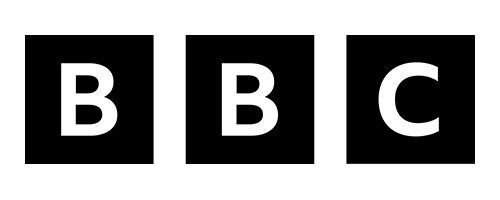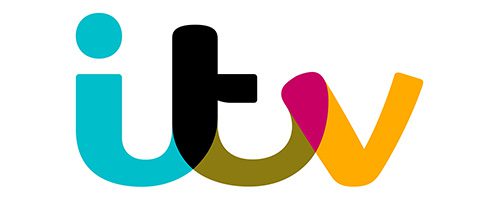By Danielle Jordan. Last Updated 13th March 2025. For many professions, and especially those working in manual professions, accidents in the workplace (such as a trip over tools work accident) are all too common.
No matter what your profession or role is, all workers and employees have the legal right to expect that their employer has taken every reasonable step to keep them from harm whilst in the workplace.
This goes for regular places of work and any exceptional places as well, such as places you are visiting whilst working. As such, if an accident in the workplace does occur, such as slips, trips and falls, the injured party can make a claim for personal injury compensation.
So, if you want to find out if you have a valid claim, get in touch with our advisors.
- You can call us on 0800 073 8804
- See if you have a claim online by filling out the form on our website
- Chat to our advisors via the pop-up window in the bottom right
Select a Section
-
- Slips, Trips And Falls Over Tools In Work Accidents
- How Do Workplace Safety Regulations Protect Employees?
- Can I Make A Claim If I Had A Tools Work Accident
- Statistics On Trips And Falls In The Workplace
- Tools Work Accident – Compensation Examples
- Work Injury Solicitor – No Win No Fee Work Accident Solicitor
- Why Choose Us For Your No Win No Fee Compensation Claim?
- Talk To Our Dedicated Solicitors Today
- Useful Links
Slips, Trips And Falls Over Tools In Work Accidents
All employers have a duty of care to their employees under the Health and Safety at Work etc Act 1974. The law requires reasonable steps to be taken to ensure the safety of the workforce.
The Health and Safety Executive (HSE), the national workplace health and safety regulator for Britain, has published guidance on preventing slips, trips and falls at work. Key factors include keeping walkways clear, and designing safe environments with enough access and adequate space.
The eligibility criteria to claim compensation if you tripped over tools at work are:
- Your employer owed you a duty of care.
- That duty was breached in some way.
- This breach caused an accident in which you were injured.
So if you tripped on tools and believe your employer was at fault, talk to our advisors today for a free zero obligation eligibility assessment. The team are available 24/7 via the contact information given below.
How Do Workplace Safety Regulations Protect Employees?
There are numerous health and safety workplace regulations that govern and refer to aspects of safety and internal traffic routes in the workplace. Internal traffic around the workplace means the usual walkways and corridors. They take people around things such as workbenches or desks and should always be kept free from clutter, such as tools. If you have tripped over tools in the workplace due to them being carelessly left in these areas, you could have a personal injury claim case.
Regulation 12 ‘Condition of floors and traffic routes’ (section 3) of the 1992 Workplace (Health, Safety and Welfare) Regulations states that;
“So far as is reasonably practicable, every floor in a workplace and the surface of every traffic route in a workplace shall be kept free from obstructions and from any article or substance which may cause a person to slip, trip or fall”.
This means that employers have a responsibility to keep all walkways and routes through the workplace safe and clear. Actions that must be taken to prevent a work accident include;
- Having the right policies and procedures in place to ensure that tools are stored correctly and that any spills or waste is cleaned up.
- Keeping floor surfaces well maintained, enhancing slip, trip and fall safety. Slips can be caused by substances such as water, oil and other liquids.
- Providing correct tool storage facilities to prevent a trip over tools work accident.
Carrying out regular risk assessments. These should also be done when there are any changes to the layout of a workspace or environmental changes.
All of these steps are designed to reduce the chance of a slip, trip or fall hazard causing accident and injury in the workplace. If, or when an accident does happen, an employer can be held liable for compensation to the injured employee. This is especially the case if the employer has been negligent, or is in breach of their duties as outlined in the above legislation.
Can I Make A Claim If I Had A Tools Work Accident
If you have tripped over tools in the workplace and the accident was caused by someone else or by negligence, you can have a legitimate case to make a claim for personal injury compensation. Assuming the accident happened in the workplace, you would make the claim against your employer.
To have a successful trip over tools work accident case, you need to be able to present evidence your employer was in breach of the regulations. You will need to show that the breaches lead to hazards around the workplace in places where you should be walking, such as common routes around your workplace. If your workplace regularly has tools being left on the floor or in hazardous positions, or if there is no place to adequately store the tools, it is likely the workplace will be viewed as hazardous.
I Tripped At Work – How Long Do I Have To Claim For My Injuries?
As stated above, workplace accident claims need to be supported with evidence. Additionally, your claim must be started within the time limit. The Limitation Act 1980 sets this as generally three years after you tripped over at work and suffered injuries as a result. However, this could as be three years from the date of knowledge, such as the day your injuries became apparent or were connected to employer negligence.
There are certain circumstances where an injured party cannot start a claim for themselves. These situations suspend the time limit. They include:
- Adults who lack the mental capacity to start their own claim. A litigation friend could claim on their behalf at any point. However, should the injured party regain capacity then the time limit is no longer suspended. This means they have three years from the date that capacity was regained to claim if one has not been started on their behalf.
- Children under the age of 18 cannot start their own claim. As with adults who lack the mental capacity to manage their own claim, a litigation friend could start one at any point on their behalf. However, the time limit ceases suspension on the day the injured party turns 18. If a claim is not started on their behalf, they have three years from their 18th birthday to start one.
If you tripped over due to employer negligence, our advisors could assess the potential of your claim. If it seems valid, they can help you get started right away.
Statistics On Trips And Falls In The Workplace
Slips, trips and falls are the most common type of accident in the workplace. According to statistics released by the HSE, there were 604,000 self-reported non-fatal injuries to employees in 2023/24 across all industry sectors. There were also 61,663 non-fatal injuries to employees reported by the employer.
Of all these reported non-fatal injuries in 2023/24 across all industry sectors, slips, trips, and falls made up 31%.
Slips, trips, and falls also led to:
- 25% of all workplace injuries that required more than 7 days absence off work.
- 46% of all specified (a predefined list of) workplace injuries.
- 1% of all workplace fatalities across 2019/20 – 2023/24 (when combined with injuries resulting from handling, lifting, and carrying accidents).
As you can see, trips in the workplace are unfortunately common. So, if you’ve tripped over tools in the workplace, please contact us today. If you connect with one of our solicitors, they will work with you closely to try and secure you compensation for tripping over tools at work.
Tools Work Accident – Compensation Examples
If you can prove that your employer was responsible, or at fault, for injuries caused by the negligent placement of tools at your work, then your accident could potentially lead to a claim against them.
You could potentially receive two types of damages – general and special damages.
General damages is an amount of compensation for the pain and suffering of your injuries. If your claim is successful, you will be always be awarded general damages.
In order to show you how general damages can be awarded for an injury – we have created a chart featuring compensation ranges for various injuries that could be sustained in an accident at work caused by tools. The information comes from the Judicial College Guidelines (JCG).
Compensation Table
It is important we state that the top entry in this table is not from the JCG. Please use this information for guidance purposes only.
| Injury | Description | Amount |
|---|---|---|
| Multiple Very Serious Injuries together with significant Special Damages | Very Serious | Up to £250,000 + |
| Neck Injuries | (a) Severe - (ii) | £80,240 to £159,770 |
| Foot Injuries | (d) Severe | £41,970 to £70,030 |
| Knee Injuries | (a) Severe - (ii) | £63,610 to £85,100 |
| Ankle Injuries | Severe (b) | £38,210 to £61,090 |
| Back Injuries | (b) Moderate (ii) | £15,260 to £33,880 |
| Other Arm Injuries | (d) Simple Forearm Fractures | £8,060 to £23,430 |
| Hand Injuries | (m) - Amputation of Little Finger | £10,550 to £14,940 |
| Wrist Injuries | (d) Largely Complete Recovery | £7,420 to £12,630 |
Special damages may not apply to every claim. You would only be eligible for this payment if your injuries have affected you financially.
Special damages can help you with any financial losses caused by your injury such as:
- Loss of earnings
- Medical expenses
- Mobility aids you have purchased to help you cope with your injury
Please speak with one of our advisers for information about accident at work claims or the compensation you could be able to seek in your claim.
Work Injury Solicitor – No Win No Fee Work Accident Solicitor
If you’ve been injured in an accident at work, we recommend you hire a work accident solicitor. They can help you through every process of the personal injury claims process. However, you may be concerned about hiring a solicitor without the guarantee of receiving compensation.
One of our solicitors could offer you a Conditional Fee Agreement, which is a type of No Win No Fee. You are not required to make any payments up front or during the claim under these types of agreements.
If we do help you secure compensation, you would pay a legally capped success fee that is deducted from your settlement. If your claim does not succeed, you won’t be required to pay this.
Get in touch today to find out if a work injury solicitor from Legal Expert could help you with your claim on a No Win No fee basis.
Why Choose Us For Your No Win No Fee Compensation Claim?
A trip over tools work accident could leave you with a variety of different kinds of injuries and leave you suffering both physically, mentally and psychologically. These injuries can result in life-changing consequences for people, stopping them from being able to work and losing income. The right solicitor will be able to help you bring a successful compensation claim against your employer or other responsible parties (such as their insurance).
Why do clients choose to work with us? We have a team of expert solicitors who are on hand to help with your case. We can work with you to offer a range of excellent legal services and general legal advice. Thanks to our experienced and expert legal representatives, you can benefit from our range of services.
We can start reviewing your case through a free, no-obligation consultation. This talk will help to establish the credentials of your case. We aim to support you through your recovery and get you back on your feet. Take advantage of our comprehensive No Win No Fee personal injury compensation service. At Legal Expert, we are dedicated to representing your and fighting your case and will fight to get you the compensation you deserve.
Talk To Our Dedicated Solicitors Today
Many trips over tools work accident injuries are caused by slips, trips and falls. They can result in a relatively minor injury all the way up through broken bones and even in extreme cases result in brain damage to the injured party.
We will have a much better chance of making a successful claim for you if we can demonstrate your injuries through medical reports and your employer’s accident report book. This will help us to show that you have been injured, that the injury was not your fault and that in this case, you were not at fault.
It is in the interest of making a successful claim to get professional and expert legal advice straight away. At the start of your claim, we will always make it clear that no two personal injury claims are the same. Even if the resulting injury and the accident which caused it are the same, the result and effects of you and your life could be totally different. If you do not see a doctor and obtain a comprehensive medical report as well as having the incident logged in your employers’ accident report book, and if you do not see a solicitor at the earliest chance, you could jeopardise your claim. Ultimately, not getting these early steps right could mean that your claim is not successful or that your claim is unsuccessful.
At Legal Expert, we are ready to work with you and getting you the compensation you deserve for your trip over tools work accident. We regularly work with clients who have had cases covering all kinds of workplace accidents. We can provide help and advice for anyone who has been injured in the course of their workday. Even if you are a guest or visitor to a workplace you can still make a claim against the employer responsible for the area.
We can start your claim today with an initial, free consultation. We’ll discuss your claim and possible compensation. Talk to our legal experts today. Fill in a contact form or use our online chat feature. Alternatively, you can call our experts today on 0800 073 8804.
Useful Links
- CCTV Footage Request Form – If your injury was captured on CCTV, you have a legal right to request the footage.
- Find out more about what responsibilities your employer has to keep you safe at work.
- Learn more about how to make an accident at work claim if you fell off a ladder at work.
Feel free to contact Legal Expert today if you would like to ask any questions about claiming compensation for a trip over tools work accident or a similar incident.







